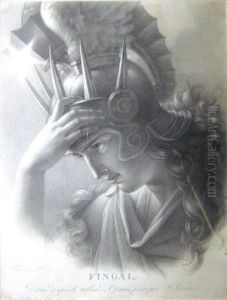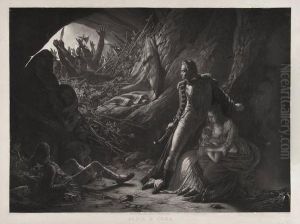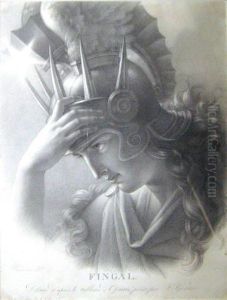Alexis-Francois Girard Paintings
Alexis-Francois Girard was a French artist and painter, born in 1787. His life spanned a dynamic period in French history, including the tumultuous years of the French Revolution, the Napoleonic era, and into the reign of Napoleon III in the 19th century. Girard's career is less documented than many of his contemporaries, and he is not as widely known as other artists of his time.
Despite the scarcity of records, it is known that Girard focused primarily on portrait painting, a popular genre during his lifetime. Portraits were in demand by the bourgeoisie, aristocracy, and later by the emerging middle class, who wished to assert their status and preserve their likenesses for posterity. Girard would have been trained in the neoclassical style dominant during his formative years, a style that emphasized clarity, order, and idealized beauty, reflective of the values of the Enlightenment.
Throughout his career, Girard would have witnessed and possibly adapted to the evolution of art styles, including the shift towards Romanticism, which emphasized emotion and individualism, as well as the beginnings of Realism, which focused on depicting subjects as they were, without idealization. He may have also experienced the early days of Impressionism, which began to take shape in the later years of his life, although it did not become prominent until after his death.
The political upheavals and changing social structures of his time would have influenced the art market and the kinds of commissions available to artists like Girard. As with many artists of the period, the changing tastes and patronage would have impacted his career in various ways. Unfortunately, specific details about his patrons, his most famous works, or his influence on other artists remain limited in historical records.
Girard passed away in 1870, leaving behind a legacy that, while not as celebrated as some of his peers, contributed to the rich tapestry of French art in the 18th and 19th centuries. His works, to the extent that they are preserved and studied, provide insight into the stylistic transitions and cultural preoccupations of his era.


